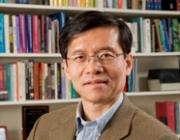A bamboo ceiling in the classroom?
Type
A large body of research has well established that Asian Americans have achieved equal and sometimes superior socioeconomic status compared to that of Whites since the civil rights movement (1–3). A salient feature of the Asian American population is their very high educational achievement relative to Whites and other racial groups. Indeed, it has been proposed that Asian Americans have resorted to formal education as a channel of social mobility to safeguard against potential racial discrimination toward them in American society (4–6).
Due to their socioeconomic success, Asian Americans have been stereotypically called the “model minority” in popular media. The social reality, however, is far more complicated than what the “model minority” label supposedly entails. A more apt sociological description would be a “heterogenous minority” (1). While today’s American society is already highly diverse, Asian Americans are even more diverse than Americans in general. Not only are Asian Americans highly heterogeneous in terms of ethnicity, immigration generation, and path of immigration but also in occupation and income (1). For example, a larger portion of Asians live in poverty than do Whites (1). Coined initially for the purpose of political advocacy at the end of the civil rights movement in 1968 (7), the term “Asian Americans” has been used mainly as a convenient label encompassing heterogenous individuals and heterogenous groups of individuals of Asian descent (8). Many Asian Americans still prefer to identify themselves by their ethnicity, such as “Chinese Americans,” “Korean Americans,” and “Indian Americans.”

